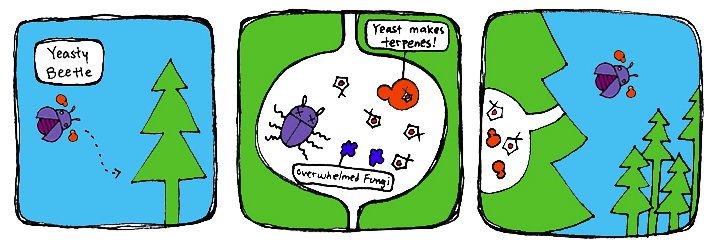Team:British Columbia/Model2
From 2011.igem.org

MODEL 2: Dynamics of Mountain Pine Beetle Populations in British Columbia
Modeling the mountain pine beetle epidemic using a probabilistic clustering approach
The Beetle's Strategy
The mountain pine beetle lives in symbiosis with the blue-stain fungus (which has the ability to break down monoterpenes). Their relationship allows the mountain pine beetle to avoid the toxic effects of the monoterpenes, while the blue-stain fungi is carried inside the tree where it can happily grow and colonize. Monoterpenes produced by trees deter away insect attack, but stressed trees produce low amounts of monoterpenes. Due to this, both the pine beetle and the fungi exploit the tree for their own benefits. The beetles lay their larvaes inside, while the blue-stain fungi grows inside the tree and provide a source of nutrient for the young larvaes. Once the larvaes grow out into adult beetles, they carry the blue-stain fungus and infects other trees. The trees die from this because the blue stain fungus blocks transport of water and nutrients.
 "
"

